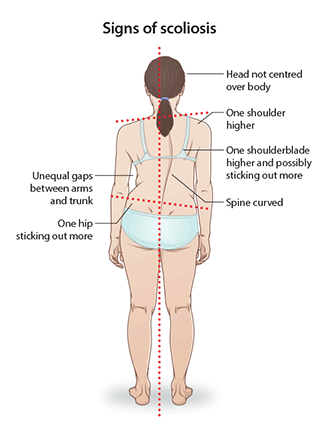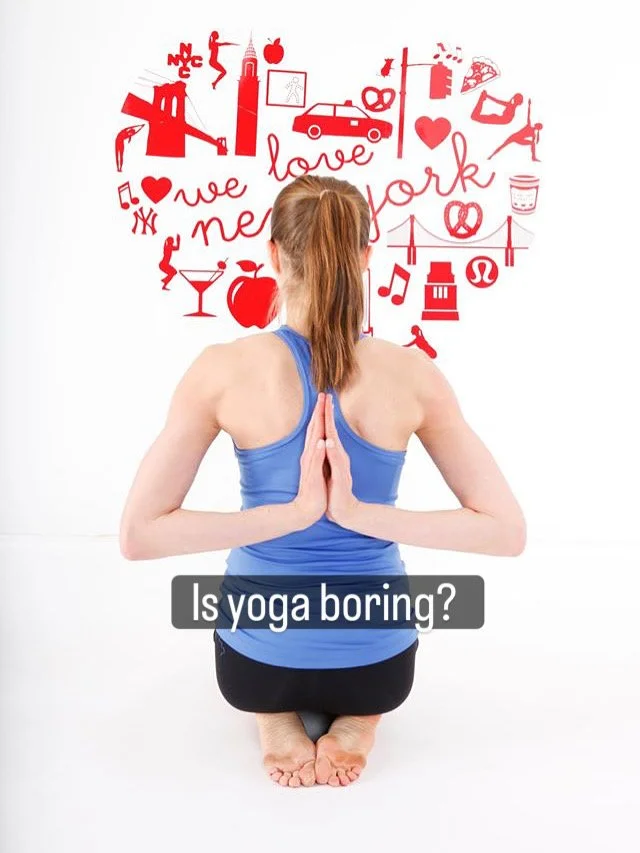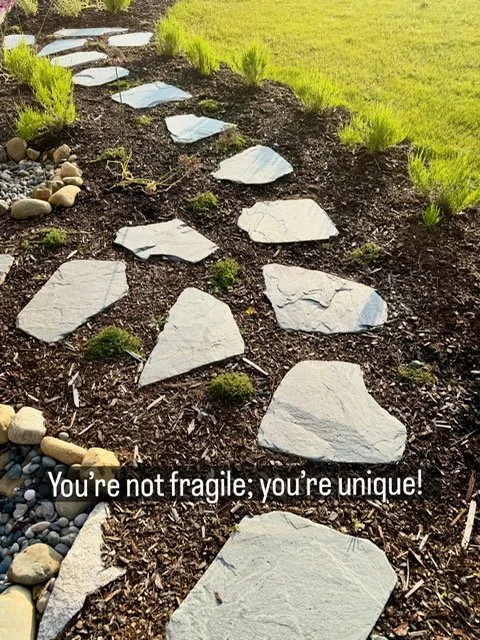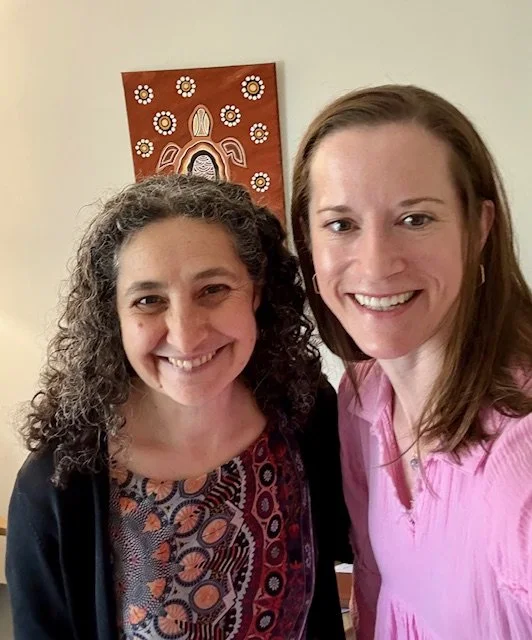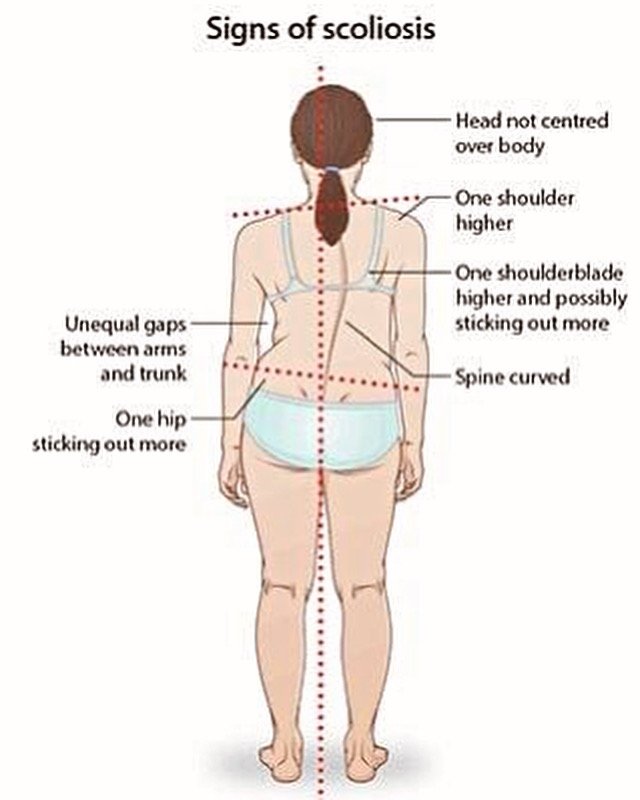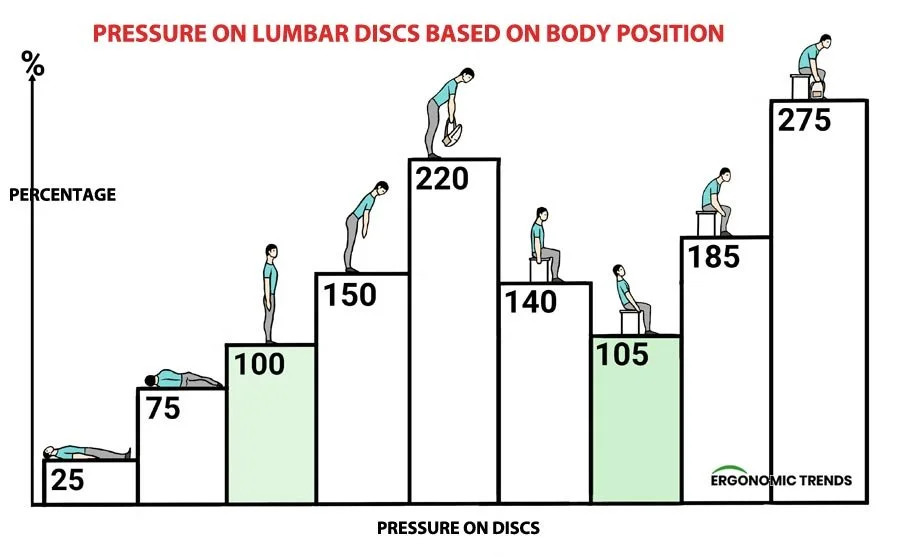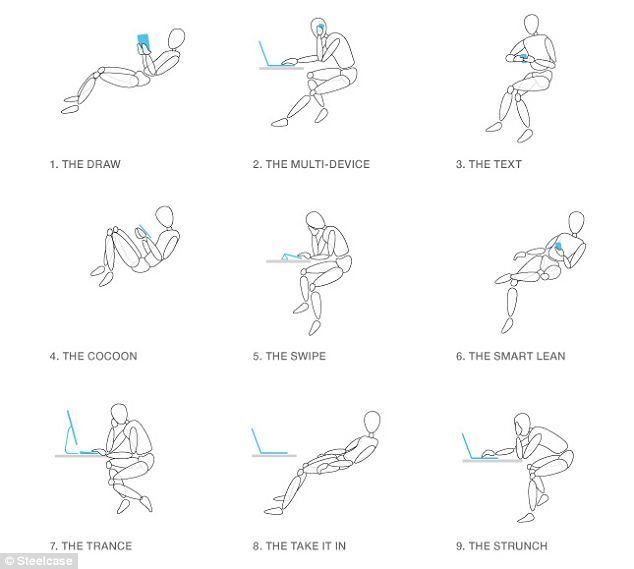Back to School Physicals & Scoliosis Screening
It’s that time of year with back to school shopping, haircuts, and sports physicals. And let’s not forget your child’s spine health while we’re at it!
If a scoliosis screening isn’t already part of your child’s exam, ask for it. Routine screening usually begins at age 10 for girls, and 12 for boys. And remember, you know your child best: staying aware of any signs of asymmetry can help catch changes early.
Even if your own school days are long behind you, your spine still deserves attention. Many people don’t realize that scoliosis can continue to progress into adulthood, potentially progressing by up to one degree per year for more significant curves.
The good news is that you’re not stuck with worry or discomfort. Scoliosis-specific exercise and mindful posture work can help you feel stronger, stand taller, and move with more confidence.
If you’re ready to take an active role in caring for your spine, I’m here to guide you. Book a call with me today, and let’s build a plan that supports you for years to come.
Is yoga boring?
I hear this every so often. It may even come from someone who practices yoga and only sticks with it because they notice all the health benefits. But more often, it’s from those who tried yoga once or twice and found it boring.
My response? That’s cool. To each their own. However, I believe we go through phases in life where we’re more or less open to new ideas or practices, so my hope is that someone gives it another try down the road.
As much as I love yoga, I won’t argue that it can be boring, but that can be part of the experience, or a reflection of your mind state. In a world full of chaos, constant news, and incessant scrolling, how often do we truly sit with ourselves in quiet presence?
Here’s a little secret I’ve learned from knowing many yoga teachers over the years: those “boring” practices of yoga—like stillness, breathwork, meditation, or relaxation—don’t necessarily come easy to us either, at least not at first. Yet, we’ve experienced the profound benefits of calming the mind, being present, and nurturing ourselves energetically. The benefits of yoga aren’t just about stretching; they’re about learning to identify a stressed-out state and knowing what to do about it, or the self-reflection needed to pause before reacting impulsively and not allowing oneself to be pulled around like a pinball machine.
Curious about experiencing the quieter side of yoga for yourself? The practice is more than stretching into physical forms. Maybe it’s time to explore beyond what you’ve tried before. Whether you’re seeking peace or simply a moment of calm in your day, I’m here to guide you on that journey. Message me to learn more about how yoga can fit into your life.
You’re not fragile; you’re unique.
Have you heard these tips: Listen to your body. Do what feels good. Your body will tell you if a move isn’t right for you.
That sounds nice, but it’s not quite enough.
Why? Scoliosis has a mind of its own and is strong in its curves. A body with scoliosis might feel comfortable hanging out or stretching into those curves. But when we mindfully practice exercises to move out of our curves and find more balance, it can initially feel awkward. We often need props or the trained eye of an instructor to help us remap our posture and strengthen from a place of optimal alignment that is unique to you.
Learning your unique scoliosis pattern and your postural tendencies is part of the work—and part of the fun. Adopting a curious approach to scoliosis exercises is key because it’s not a one-size-fits-all journey.
Can you visualize or draw your unique spine? I’m here to help you if that question leaves you scratching your head.
Scoliosis & Walking
When I was pregnant, I walked this loop at Holmdel Park every single day, and this hill became a challenge near the end. Instead of stopping, I’d walk backwards up the hill to use different muscles. Now it’s a breeze to walk up.
If I had to name the top activity clients want to get back to, it’s walking—with more ease and for longer than 20 minutes. Whenever possible, I suggest walking on natural surfaces like dirt paths instead of pavement. A smooth surface is more predictable, but a natural surface is easier on our joints.
During my Scolio-Pilates training, the topic of treadmill desks came up—they’re quite popular. Focusing on your computer work, walking, and being aware of your active posture can be a lot to manage all at once.
I’m curious: Do you multitask when you exercise, or do you prefer to focus on your posture and breathing?
If you’d like help getting back to walking with more ease—or moving through life with less pain and more confidence—send me a message. I’d love to support you!
Why I Traveled Over 600 Miles to See My Doctor
Simply put, I’ve learned the hard way that it’s best to keep a good doctor rather than settle for whoever is nearby. I can’t travel forever to see my old endocrinologist, but it was one less thing to figure out when I moved from NJ to NC. I had a fantastic endo in NYC, and it took me half a dozen doctors in NJ before I finally found the right one to stick with.
I’ve spoken with many people who’ve undergone spinal surgery and opted for local surgeons for convenience, whether in a small town or a large city, and ended up regretting not opening their scope of options. Finding the right surgeon is a crucial task, not one to rush into, especially for serious surgeries where the stakes are high. I also know people who travel to other states for their procedures—and no, it’s not convenient for anyone, but sometimes it’s worth it.
I’ve also had people who live just 20 miles from me ask if I know someone who does what I do but closer to them. We’re surrounded by generalists, but when it comes to finding the right doctor, therapist, or scoliosis-specific exercise specialist, proximity shouldn’t be the deciding factor.
When was the last time you hugged your doctor? I hope it was recently if you needed one.
Does Surgery Fix Scoliosis?
X-rays can be both fascinating and a bit intimidating. Many people are surprised when they first see an x-ray of their spine, especially when a doctor points out the curves of scoliosis. Each person's spine is incredibly unique, constantly adapting to keep our bodies upright over time.
After my spinal fusion surgery, I expected to see a straight spine on my x-rays. However, reality taught me that surgery's outcomes vary widely—some achieve straight spines in more recent surgeries. The results of surgery depend on numerous factors: age, bone health, surgical expertise, lifestyle, and the strength of your scoliosis.
Does spinal fusion cure scoliosis? No. Does it fix it? Partly. It stabilizes the fused area to prevent further curvature, rotation, and collapse. Yet, our bodies retain their scoliotic tendencies despite surgery's intervention. Some spines are resilient, even challenging their hardware.
The point of sharing these insights is that outward appearance can be deceiving. Someone may appear perfectly balanced despite underlying complexities. Importantly, the degree of spinal curvature doesn't necessarily correlate with pain or discomfort, so there's no standard way to feel about scoliosis.
For me, surgery extinguished one fire (actually two: pain and severe asymmetry) but introduced new responsibilities. It's not a "fix it and forget it" scenario; ongoing spine care remains essential. It's a journey of continuous self-care and mindfulness toward spinal health.
Don’t mind my feet! But do you mind your feet?
I’m just opening up the neural gaps, increasing circulation, and improving the communication pathway from my feet to my brain.
Unless you go out of your way to shop for a shoe with a wide shoe box, not to be confused with a wide shoe, your footwear is compressing your toes.
Weak feet give you a poor foundation for your joints above, so adding footwork into your practice is always a good idea.
My son has been asking for toe separators after seeing my various toe socks. They can be worn for a few minutes initially to build up your comfort level. These will help your balance and foot pain.
If you’d like to receive my list of Healthy Foot Tips, send me an email, so I can share it with you.
National Scoliosis Awareness Month
June is National Scoliosis Awareness month.
Increasing awareness may happen through:
* education about the prevalence of scoliosis
* encouraging screening for early detection
* supporting our fellow scoliosis warriors within this community
I had a good time this morning supporting my fellow scoliosis and fusion warriors by teaching my workshop: Scoliosis & Fusion Daily Yoga.
I will be sharing many of my thoughts on this topic throughout this month. Let me know what thoughts or questions come up for you?
Signs of Scoliosis
My mild childhood scoliosis became visible when I was trying on bathing suits for Spring Break when I was a freshman in high school. If you wear baggy clothing as I did at the time, it can be difficult to notice some of the signs of scoliosis. For this reason, scoliosis can be easily missed by parents, caregivers, and even doctors.
If you have reason to suspect scoliosis—for example, your child was told that they had a ‘mild’ curve when they were younger—take a moment to look at their back periodically. If you suspect scoliosis, ask your doctor for an evaluation. Even if a child is active, they don’t “grow out” of scoliosis in time or by participating in sports.
Many public schools no longer provide scoliosis screening.
Early detection offers more treatment options.
True or False?
I have to ask this question because I commonly hear comments about not being able to do yoga because the person can’t touch their toes.
But here’s the thing... The only prerequisite for practicing yoga is that you are able to breathe.
At the end of the day, we all have some compression from the effects of gravity. Those who are more flexible are more likely to collapse in their curves and further compress the collapsed (concavities) areas of their back. Instead, our goal is to stay upright and elongated, and we do that by working on our control and stability of the spine.
A new client called himself a “skeptic” until he actually tried yoga, and then realized that it truly did help with aches and pains.
Scoliosis and Fusion Friendly Back Strengthening
This pose may be called:
4-point Stabalization
Tricky Cat
Bird Dog
This pose is great for strengthening your back and core muscles, as well as challenging your balance. Don’t progress until you feel you have the strength to maintain length and expansion in these variations. You may repeat these movements as you build your strength, and also practice longer holds.
Get relief for lower back pain!
The amount of pressure we put on our spine is greatly affected by our position. Have you ever noticed how your lower back stiffens after a long flight or car ride? 🖐️ If I had to choose, I much prefer to stand than to sit, and this chart breaks it down beautifully how the low back is loaded differently in these positions.
What’s the takeaway? Switch up your posture! But let’s focus on that very first bar, which shows the lowest load on your spine. When pain strikes, spend 5-15 minutes lying on your back, like a back reset. I would add a pillow under the knees for extra support of the lower back.
Let’s shift perspectives this season.
While some chase quick fixes for a summer body, let's prioritize long-term wellness. Picture yourself in 10 or 20 years – what shape do you want to be in? It's not just about the next few months; it's about investing in your future self. Those nagging aches and habits? They compound over time, and not in a beneficial way like a bank account.
Let's shift to a proactive approach, nurturing our bodies with consistent care rather than scrambling for solutions when it's too late. Opt for prevention and maintenance to feel good in our body, enabling those long walks or bike rides when the weather beckons.
Spring brings a surge of motivation and energy, and I've noticed many new clients eager to kickstart their movement journey. If you're pondering where to begin, reach out! I'm here for a free phone consultation to discuss where you're at and how to embark on this journey. Embrace the season's vitality!
Embracing my new North Carolina roots!
Embracing my new North Carolina roots with a shirt to seal the deal!
When I meet new people and tell them what I do, I usually get a surprised response. Who knew teaching yoga virtually could spark such surprise? People often ask, "Does that really work?" or "People still do that?" Well, let me share my journey with you.
A decade ago, I migrated from the hustle and bustle of NYC to NJ, craving yoga classes that catered to my needs, especially regarding scoliosis and back care. Trips to the city for classes became rare as weekends filled up with being a parent. But then, 2020 brought a silver lining - virtual classes!
While nothing beats the energy of an in-person class, Zoom sessions brought consistency and accessibility to my practice, connecting me with beloved teachers more frequently.
If you're on the hunt for a specialized yoga teacher, online classes might just be your hidden gem. Many of my clients, even those within driving distance, prefer the convenience of virtual sessions, avoiding driving and traffic.
Sure, adjusting to online practice takes a little time, but trust me, the benefits are worth it. Don't let hesitation hold you back. The perfect situation may never come - it's the consistency that counts!
Ready to dive into your virtual yoga journey? Send me a message, and let's get started!
Overcoming challenges with autoimmune disease.
Reflecting on moments of 'why me' during spinal fusion surgery at 16, only to face another health shock with an autoimmune diagnosis two years later, I've often asked the fairness of it all. I've felt that so much of my adult life has been diverted to taking care of these health conditions, which is serving me well in some regards, but has felt like a part-time job at times.
March is Autoimmune Disease Awareness month, so what better time to shed light on the fact that these 'silent' conditions can be anything but silent for some of us. Just last year, I found myself with a second autoimmune disease, which demanded significant energy and time to navigate.
It's a reminder that appearances can be deceiving. We don't know what anyone is battling beneath the surface. For me, it's been about self-education, trial and error, and prioritizing a holistic approach to wellness – from caring for my back to mindful choices about what I consume and how I manage stress.
While we don't have complete control of our health, I've discovered the power of community, much like with scoliosis. It can be exhausting to constantly justify our energy levels, dietary choices, or mood swings, but I share my journey to let others know they're not alone – I understand the struggle.
What is Cobb Angle?
What is Cobb Angle? What does it tell us? What it doesn't tell us?
Scoliosis can be measured by its Cobb Angle, which is a calculation of the degree of curvature that the spine moves in each curve.
A single-digit Cobb Angle isn't defined as a scoliosis diagnosis. Any degree of Cobb Angle over 10 degrees can be categorized into mild, moderate, or severe scoliosis. Having this knowledge is especially important during a growth period when monitoring and deciding the best treatment options.
Knowing your Cobb Angle isn't going to tell you how you feel or how you hold yourself up. Someone who has a large Cobb Angle may not experience any pain, and someone with a relatively small Cobb Angle may experience regular pain.
If you've had images taken of your spine, it's nice to know what your Cobb Angle is, but don't feel that you need to get them taken just for that calculation. Your physician will determine if imaging is needed based on your needs.
Again, a spine with 0-9 degrees of Cobb Angle is not considered to have scoliosis. The Cobb Angle of my largest curve was 78 degrees prior to having my spinal fusion, which is pretty far from straight-ish. However, many people have that Cobb Angle, or greater, and live an active life without having surgery.
Our Cobb Angle doesn't define us, it's just a number that may give guidance or be a reference point.
New beginnings this Spring!
I'm happy to finally share that I've been expanding my training and studies into pilates for scoliosis!
Learning a new movement modality had been a fun challenge. Yoga has served me very well in many ways through the decades, yet it's been a joy to add in something different. Through pilates, I've learned more about my scoliosis, experienced my 3-dimensional rotations in new ways, and have felt muscles in new ways.
In mat pilates, there's the simplicity of a mat, which similar to yoga, makes it accessible to do anywhere. However, there's such a leap of experience in using a reformer to aid in stability while challenging the body with different types of resistance work.
So far I've done training and will continue to learn from Karena Thek's Scolio-Pilates, as well as the Polestar Scoliosis Pilates course taught by Lise Stolze and Hagit Berdishevsky.
Local students may work with me at LKN Pilates where I'm teaching a scoliosis-focused yoga and pilates class series in March. It's a beautiful space with all the apparatuses you could want.
Is your desk posture causing your back pain?
Being stuck in one posture for too long is never good for your body, and especially a seated posture for 15 hours per day. I sure hope you're not at your desk for 15 hours, but cumulatively you may be sitting that much per day with work, commuting, meals, and watching TV.
Look at how you're sitting, or, even better, have someone help you look at how you actually sit. What's the habit? Are you ever sitting on your pelvis evenly? Are you usually sitting with a tucked pelvis that causes a forward flexed spine? Your habitual seated posture matters, because it can lead to pain over time.
A yoga practice isn't about it being a workout or needing flexibility, but cultivating the knowledge and body awareness to know how you carry yourself. A day of lousy posture isn't a big deal, but what about always sitting on one hip, or slouching back in your chair, for decades? These seemingly minor tweaks in our habits do impact our bones, muscles, tissue, and breath over time.
Posture is important if you are experiencing back pain. Instead of a corrective device or popping a pill, start working on finding your inner strength and awareness to address your posture all on your own!
Detecting Scoliosis
My mild childhood scoliosis became visible when I was trying on bathing suits for Spring Break when I was a freshman in high school. If you wear baggy clothing as I did at the time, it can be difficult to notice some of the signs of scoliosis.
If you have reason to suspect scoliosis—for example, your child was told that they had a mild curve when they were younger—take a moment to look at their back periodically. If you suspect scoliosis, ask your doctor for an evaluation.
Most public schools no longer provide scoliosis screening.
Early detection offers more treatment options.


